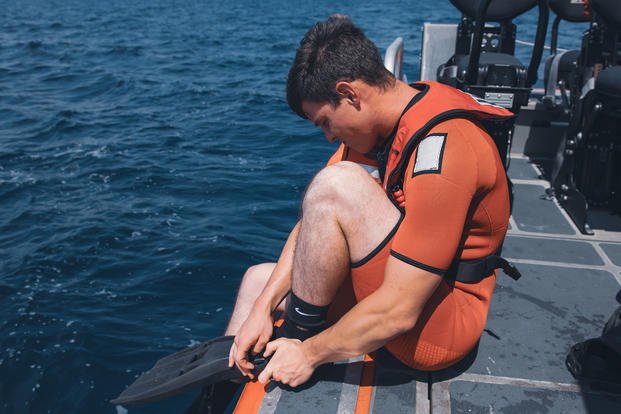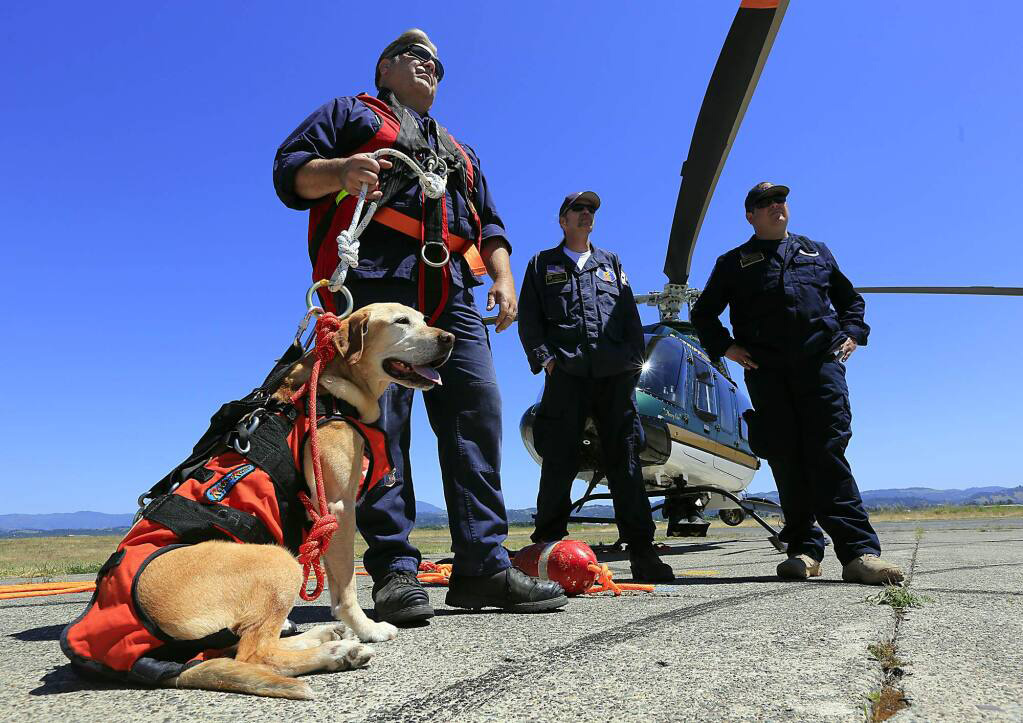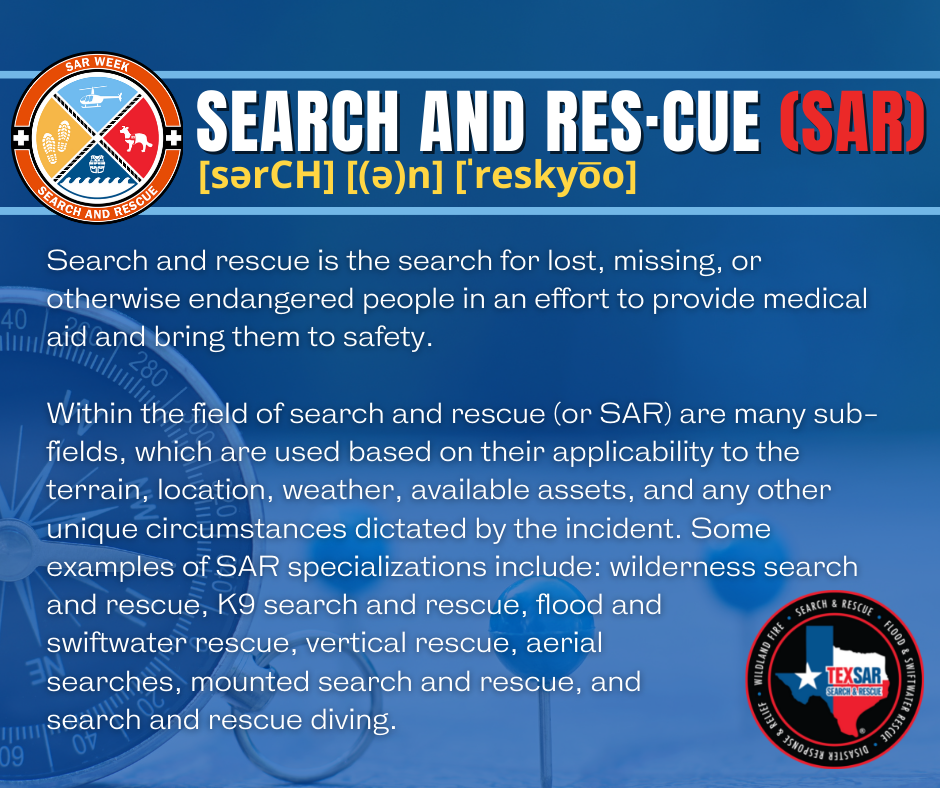To become a search and rescue professional, obtain proper training and certification in areas such as wilderness survival, first aid, and navigation. Gain experience through volunteer work with local search and rescue teams or emergency services.
Pursue additional education in related fields such as emergency medical services or outdoor leadership to enhance your skills and knowledge. Entering the field of search and rescue requires dedication, qualifications, and hands-on experience. This vital work entails responding to emergencies, helping people in distress, and providing lifesaving assistance in various environments.
By mastering essential skills, obtaining the necessary training, and gaining practical experience, you can become a valuable member of a search and rescue team. Embracing the demands and rewards of this profession is key to making a meaningful difference in people’s lives during critical situations.

Credit: www.military.com
What is Search and Rescue?
Search and rescue is an essential service that saves lives in emergency situations. It involves locating and assisting individuals who are missing, injured, or in distress. The dedicated individuals who participate in search and rescue operations play a crucial role in ensuring the safety and well-being of people in need. If you have a strong sense of adventure and a passion for helping others, a career in search and rescue might be the perfect fit for you.
Roles and Responsibilities
Search and rescue teams consist of highly skilled professionals who are trained to handle various situations. Each team member has specific roles and responsibilities that are crucial for the success of a mission. Here are some common roles within a search and rescue team:
| Role | Responsibilities |
|---|---|
| Team Leader | Coordinates the overall search effort and makes strategic decisions. |
| Searcher | Conducts searches on foot or using specialized equipment to locate missing individuals. |
| Communications Specialist | Maintains communication between team members and relays information to the incident command center. |
| Medical Personnel | Provides medical assistance to injured individuals and administers first aid. |
| Pilot | Operates aircraft used for aerial searches and rescues. |
Types of Search and Rescue Operations
Search and rescue operations can vary depending on the nature of the incident and the environment in which it occurs. Here are some of the most common types of search and rescue operations:
- Land Search and Rescue: This involves searching for missing individuals on land, such as hikers, climbers, or lost children.
- Water Search and Rescue: In this type of operation, search and rescue teams are deployed to locate individuals in distress in bodies of water, such as lakes, rivers, or the ocean.
- Air Search and Rescue: When individuals go missing in remote or difficult-to-reach areas, air search and rescue teams are deployed to conduct aerial searches and provide assistance.
- Urban Search and Rescue: This type of operation focuses on rescuing individuals who are trapped or injured in collapsed buildings or other urban disasters.
Regardless of the type of operation, search and rescue teams work tirelessly to save lives and provide assistance to those in need. Their dedication and commitment make them the unsung heroes of emergency response.

Credit: www.caloes.ca.gov
Qualifications and Skills
To become a Search and Rescue professional, possessing the right qualifications and skills is crucial. Below are essential areas one must focus on:
Physical Fitness
Being in optimal physical condition is a primary requirement for Search and Rescue personnel.
- Regular exercise routines are imperative.
- Endurance training helps in dealing with strenuous situations.
- Maintaining overall strength and agility is vital.
Navigation Skills
Effective navigational skills are essential for Search and Rescue operations.
- Proficiency in map reading and using compasses is crucial.
- Understanding of GPS technology aids in precise location determination.
- Capability to navigate through challenging terrains is necessary.
First Aid and Survival Skills
Having first aid and survival skills is paramount for Search and Rescue professionals.
- Knowledge of basic first aid procedures is essential in emergencies.
- Proficiency in wilderness survival techniques is vital for prolonged operations.
- Capability to provide medical assistance in remote areas is critical.
Also Read: How to Become a Forest Firefighter
Training and Certifications
Embark on the path to becoming a search and rescue professional through specialized training and certifications. Prepare to handle challenging situations and save lives with the required skills and knowledge in this rewarding field. Unlock opportunities to make a difference in emergency response operations.
Basic First Aid and Cpr
Learn essential first aid and CPR techniques to address emergencies confidently.
- Basic First Aid: Treat wounds, fractures, and prevent further injuries
- CPR Training: Perform life-saving resuscitation procedures in critical situations
Wilderness First Responder Course
Enroll in a comprehensive Wilderness First Responder course to further enhance your rescue skills.
| Skills Acquired | Duration |
|---|---|
| Patient Assessment | 10 days |
| Backcountry Medicine | 50 hours |
| Evacuation Techniques | Hands-on training |
See Also: How to Become a Substitute Teacher in Va
Gaining Experience
When it comes to becoming a search and rescue (SAR) professional, gaining hands-on experience is crucial. It not only helps you develop the necessary skills but also gives you a better understanding of the demanding nature of SAR work. In this section, we will discuss two key avenues through which you can gain valuable experience in SAR: volunteering with SAR organizations and participating in simulated exercises.
Volunteering with Sar Organizations
Volunteering with SAR organizations is an excellent way to get involved in real-life search and rescue operations. It allows you to work alongside experienced SAR professionals, contributing to the missions while learning from their expertise. Here are a few steps to get started with volunteering:
- Research: Begin by researching local SAR organizations in your area. Look for organizations that align with your interests and have a strong reputation within the search and rescue community.
- Reach out: Once you have identified potential organizations, reach out to them and express your interest in volunteering. Explain why you want to contribute to their cause and highlight any relevant skills or experience you may have.
- Training: Most SAR organizations require their volunteers to undergo specific training programs to ensure they are equipped to handle various situations. Be prepared to invest time and effort into these training courses.
- Hands-on involvement: Once you have completed the necessary training, take every opportunity to participate in SAR missions. This will allow you to develop practical skills and gain valuable experience in real-life search and rescue scenarios.
- Networking: While volunteering, make an effort to connect with other SAR professionals and build relationships within the community. Networking can provide you with valuable mentorship opportunities and help you stay updated with the latest developments in the field.
Participating in Simulated Exercises
Simulated exercises, often organized by SAR organizations, provide a controlled environment to practice and enhance your SAR skills. These exercises replicate real-life scenarios and allow participants to work in teams to solve complex problems. Here’s how you can make the most of simulated exercises:
- Stay informed: Keep an eye out for upcoming simulated exercises in your area. SAR organizations and training institutes often conduct these exercises periodically. Stay connected with them and make sure to sign up for the ones that align with your schedule.
- Active participation: When participating in a simulated exercise, be proactive and take on challenging roles. This will not only help you develop essential skills but will also demonstrate your dedication and commitment to becoming a SAR professional.
- Leverage feedback: After each simulated exercise, seek feedback from instructors and experienced participants. Their insights can offer valuable guidance on areas where you can improve and fine-tune your skills.
- Continuous learning: Treat every simulated exercise as a learning opportunity. Reflect on your performance, identify areas for growth, and actively seek out resources and training programs that can help you develop those skills further.
Equipment and Gear
When it comes to search and rescue, having the right equipment and gear is crucial. Whether you’re navigating through rough terrain or braving extreme weather conditions, being prepared with the appropriate gear can make all the difference. In this guide, we’ll explore the essential gear and specialized equipment needed for search and rescue operations in various environments.
Essential Gear for Search and Rescue
When embarking on a search and rescue mission, it’s imperative to have the fundamental gear that will aid in navigating and providing assistance to those in need. The following are the essential items that every search and rescue team should have:
- Compass and maps for navigation
- First aid kit for immediate medical care
- Communication devices such as two-way radios
- Flashlights and headlamps for visibility in low-light conditions
- Multi-tool or knife for versatility
- Emergency shelter or bivvy for protection from the elements
- Ropes and harnesses for vertical or rugged terrain
Specialized Equipment for Different Environments
In diverse environments, specific gear is necessary to tackle the unique challenges presented. Here’s a breakdown of the specialized equipment required for different search and rescue environments:
| Environment | Specialized Equipment |
|---|---|
| Mountainous Terrain | Climbing gear, crampons, and ice axes |
| Water Rescues | Life jackets, throw ropes, and flotation devices |
| Urban Areas | Urban search and rescue (USAR) tools, breaching equipment, and thermal imaging devices |
| Desert Environments | Hydration packs, sun protection gear, and lightweight clothing |
Understanding the Mental and Emotional Demands
Becoming a search and rescue professional requires a deep understanding of the mental and emotional demands of the job. It involves staying focused, remaining calm under pressure, and being empathetic to those in distress. Developing resilience and strong coping mechanisms is essential for handling the challenges of this demanding role.
Understanding the Mental and Emotional Demands Search and Rescue (SAR) is a demanding field that requires individuals to be prepared for the mental and emotional challenges they may face. It is important for potential SAR professionals to have a clear understanding of the mental and emotional demands before pursuing this career path. Dealing with stress and trauma and maintaining resilience and emotional stability are key aspects that require attention.Dealing with Stress and Trauma
When engaging in SAR operations, individuals often encounter highly stressful and traumatic situations. Being prepared to deal with these challenges is crucial for the well-being of SAR professionals. Building healthy coping mechanisms, such as mindfulness techniques and stress management strategies, can assist in managing the emotional toll of SAR work. It is important to promote an open culture where SAR professionals can safely express their emotions and seek support when needed.Maintaining Resilience and Emotional Stability
Maintaining resilience and emotional stability is essential for SAR professionals to effectively carry out their duties. Developing strong support systems within the SAR community and obtaining regular mental health check-ins can aid in maintaining emotional stability. Fostering a positive work environment and promoting self-care practices can also contribute to building resilience in the face of challenging situations. In summary, the mental and emotional demands of SAR work necessitate ongoing attention and care. By acknowledging the significance of these aspects and taking proactive measures to address them, individuals can better prepare themselves for the challenges they may encounter while serving in SAR roles.Role of Technology in Search and Rescue
Technology has revolutionized the way search and rescue missions are conducted, enabling more efficient and effective operations. In this article, we will explore how various technologies play a vital role in search and rescue efforts, saving lives and minimizing risks.
Gps and Mapping Tools
One of the key tools used in search and rescue operations is the Global Positioning System (GPS). This technology allows rescue teams to accurately determine their location and track their movements in real-time. By using GPS devices integrated with mapping software, search and rescue teams are able to navigate through unfamiliar terrains and increase their chances of finding missing individuals.
Mapping tools, such as topographic maps and satellite imagery, provide crucial information about the search area, including geographical features, potential hazards, and possible escape routes. These tools enable search and rescue teams to plan their operations more effectively and make informed decisions based on the terrain conditions.
Use of Drones and Thermal Imaging
Drones have become increasingly valuable assets in search and rescue missions. Equipped with high-resolution cameras and thermal imaging technology, drones can cover large areas quickly and capture detailed images of the surroundings. This allows rescue teams to identify potential signs of life, locate stranded individuals, or spot hazardous obstacles that might hamper their progress.
Thermal imaging capabilities of drones are particularly useful in identifying heat signatures emitted by humans or animals in low light conditions. This technology can help rescue teams detect individuals who may be trapped or in distress, even during nighttime operations or in dense vegetation areas where visibility is limited.
In addition to their aerial capabilities, drones can also be equipped with advanced sensors and navigation systems to support search and rescue operations in challenging environments, such as remote or hazardous terrains. These unmanned aerial vehicles provide valuable situational awareness and enhance the safety of rescue personnel by reducing the need for risky manual searches.

Credit: www.texsar.org
Joining a Search and Rescue Team
Are you eager to make a difference by contributing to search and rescue efforts? Joining a Search and Rescue Team opens avenues for you to utilize your skills in helping those in need.
Application and Selection Process
Interested in joining a Search and Rescue Team? Obtain and fill out an application to kickstart the process. Submit all required documents and prepare for the selection phase.
Integration into the Team Dynamics
Once selected, it’s time to integrate into the team dynamics. Get familiar with team members, roles, and operations to ensure a smooth transition.
Conclusion
Becoming a search and rescue professional requires dedication, training, and a passion for helping others. By following the guidelines outlined in this blog post, you can embark on a fulfilling journey to become a crucial member of search and rescue teams.
Remember to stay physically fit, develop important skills, stay updated on relevant technologies, and maintain a strong mindset. With the right mindset and preparations, you can make a difference in the lives of those in need. Start your journey today and become an invaluable asset in search and rescue operations.
